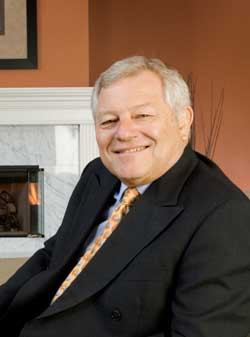Sharp Focus
Ask people why Essex retains the ability to deal itself in and out of markets effectively and earn money for its shareholders, and there’s usually a simple one-word answer: Focus. “What’s worked well for shareholders is keeping narrow focus,” Paolone says. “Being disciplined in setting investment criteria makes a lot of sense in the public markets.”
Leupold sees this advantage as well. “Keith sticks to what he knows,” Leupold says. “He understands operations, acquisitions, and dispositions of multifamily in a few select markets at this point.”
It’s not so much the fact that Essex only moves between a few select markets, but it’s the markets it calls home that makes the difference. If the REIT toiled in out-of-favor Midwestern markets, like Kansas City or Indianapolis, it’s that doubtful analysts would speak so highly of its strategy. Instead, the firm sticks with infill locations in the major West Coast markets. Fifty percent of its portfolio is in Southern California, with the remainder split almost evenly between the San Francisco Bay Area and Pacific Northwest.
Concentration in these markets seems to work for Essex. Just look at the numbers. Its 4.6 percent same-store net operating income growth in these markets put it in the top quartile of multifamily REITs in 2005. It also posted a 25 percent ten-year average total return for shareholders.
Though Essex, according to Leupold, was the first public company to focus in high-barrier-to-entry markets, the firm did venture into other spots before it went public. “As a private company, we did investments in Phoenix, Texas, and Colorado,” Guericke says. “That was a grand lesson for us. We learned how different it was to operate in those markets. There was no reason for us to be there. You can’t control the supply.”
Fast forward 15 years, and Essex’s competitors, analysts, and investors all seem to favor coastal locations. “We like their strategy focusing on supply-constrained markets on the West Coast,” Cowan says. “They are in big markets with tremendous abilities to grow the company within those markets.”
But analysts do admit that essentially being in only four markets (Essex owns a small number of units in Portland, Ore.) could put the apartment company in a difficult position in a West Coast downturn. “There may be points in time when markets may underperform or outperform,” Leupold says. “They have the potential to be more volatile at times. But we really haven’t seen that.”
But Essex may not stay solely on the West Coast forever. Guericke acknowledges that the company is interested in supply-constrained Eastern markets such as New York, New Jersey, and Washington, D.C. This interest became public in late 2005 with a bid for the Baltimore-based Town and Country Trust. Though Morgan Stanley eventually acquired Town and Country, Essex will continue to seek opportunities, according to Guericke.
But investors who like Essex’s concentration shouldn’t worry about the addition of new portfolios. “I think the fact that they backed away from Town and Country showed a lot of discipline,” Paolone says. “They did a good job of explaining what they did afterward, and I think that gave the investment community some comfort.”
